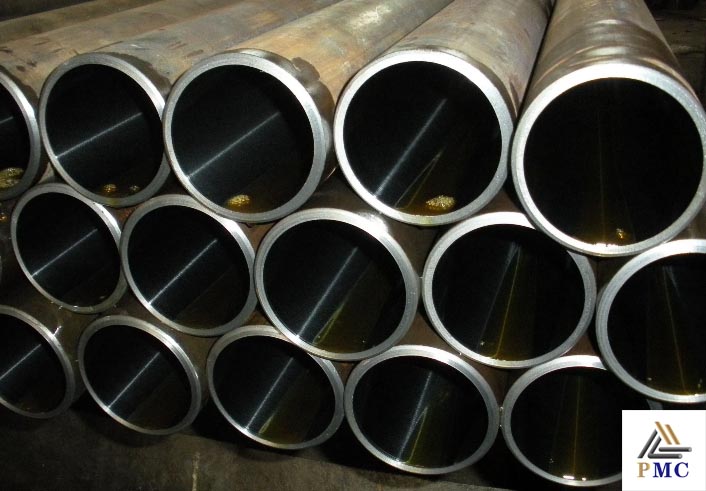
Innovation of Cold Drawing Process of Seamless Steel Pipe and its Existing Problems
1. Hammer Technique
Change to hot rolling head or waste heat hammer. This can save heating before hammer, save fuel and labor, and shorten the production cycle of seamless steel pipes.
2. Lubrication process
In the production of seamless steel pipe cold drawing, lubrication technology is an important factor that directly affects the output, quality, consumption and labor conditions.
3. Tempering process
Currently, two types of dies are used in short mandrel drawing and mandrelless drawing i.e. conical outer die and cylindrical mandrel or conical with curved outer die in short mandrel drawing mandrel.

At present, there are four cold drawing methods for cold drawn seamless steel pipes: long mandrel drawing, short mandrel drawing, air drawing and expansion drawing.
1) Long mandrel drawing
The long mandrel drawing is to put the pipe on the long mandrel, and then draw it together with the long mandrel through the drawing die. The diameter of the seamless steel pipe is reduced in the annular channel formed by the mandrel and the die hole, and the wall thickness is compressed.
2) Pull out the short plug
The short plug drawing is to draw the pipe through the drawing die, so that the diameter and wall can be reduced in the annular hole formed by the die hole and the fixed plug.
3) No plug diagram
It is the hollow compression of the pipe through a wire drawing die, the diameter is reduced, but the wall thickness is increased. The increase varies with the size of the seamless steel pipe, and is generally 1% of the diameter compression. However, when the inner diameter of the tubing is less than the second wall thickness, the wall thickness will decrease.
4) Dilation and stretching
There are two methods, one is the compression method and the other is the traction method, each with its own advantages and disadvantages. The latter has a large amount of expansion and is not easy to bend, but the pipe end must be rolled before expanding, which increases metal consumption. The former is only used for the expansion of thick-walled pipes.
The seamless steel pipe has uneven deformation during the cold drawing process, resulting in additional stress, which remains in the pipe as residual stress after cold drawing. The degree of uneven deformation of seamless steel pipe determines the size and distribution of its residual stress.
The cold drawing deformation of seamless steel pipe is determined by its deformation characteristics. Since there is no mandrel involved in the processing of the pipe wall during the air-drawing process, the thickness of the pipe wall changes very little after deformation, and the deformation conditions and deformation states of the inner and outer layers of the seamless steel pipe are very different, resulting in uneven deformation.
During the deformation process, the metal close to the inner surface of the seamless steel pipe first enters a state of plastic deformation, and the metal flows in the axial direction without being affected by the resistance generated by friction, so that the axial deformation is uneven along the wall thickness direction, resulting in the outer surface of the seamless steel pipe. The natural extension of the layers is significantly lower than the inner layers. In this way, the axial and tangential additional tensile deformation and additional tensile stress generated by the outer layer of the seamless steel pipe reach the maximum value; on the contrary, the axial and tangential additional compressive deformation and compressive stress generated by the inner layer of the seamless steel pipe also reach the maximum value. value, the additional stress becomes residual stress after deformation and remains in the tube.
To sum up, due to the uneven deformation of the seamless steel pipe after emptying, there is a large residual stress in the seamless steel pipe, so it is necessary to find an effective method to reduce the residual stress of the empty-drawing steel pipe to reduce the harm of longitudinal cracking.
Tips: Seamless Mechanical Tubing: tubing used for mechanical and light gauge structural applications. Mechanical tube is produced to meet specific end use requirements, specifications, tolerances and chemistries. This allows for more specific property uniformity throughout the tube compared to standard pipe.


